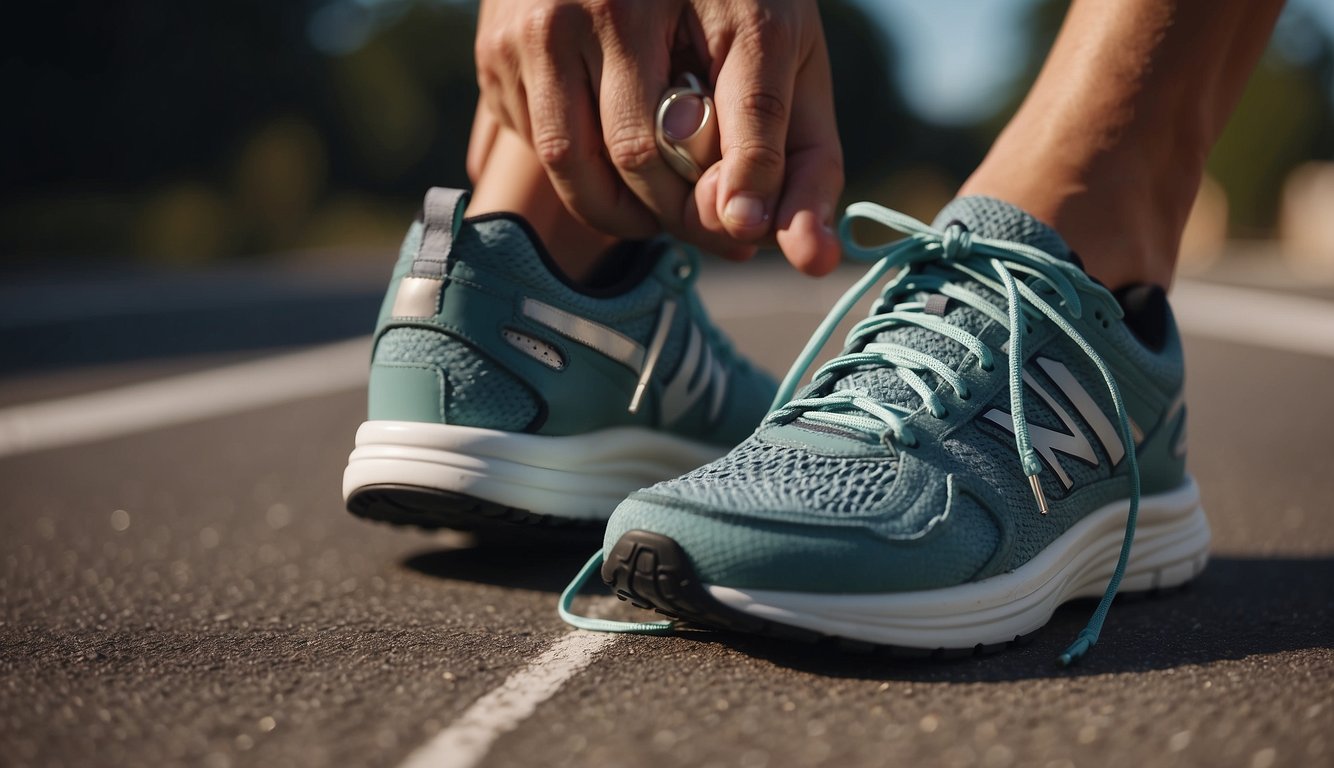Breaking in new running shoes can be a daunting task, especially if you’re not sure how to do it properly. As a runner myself, I know the importance of having comfortable and supportive shoes while on a run. However, if you don’t break in your new running shoes correctly, you risk developing blisters, discomfort, and even injury.

One of the most important things to consider when breaking in new running shoes is fit. Your shoes should fit snugly but not be too tight. If your shoes are too loose, your feet may slide around inside them, causing friction and blisters. On the other hand, if your shoes are too tight, they may cause discomfort and even restrict blood flow to your feet. It’s essential to find the right balance between comfort and support.
Another crucial factor to consider when breaking in new running shoes is support. Your shoes should provide adequate support for your feet and ankles, especially if you’re prone to injury. Look for shoes with good arch support and cushioning to help absorb shock while running. It’s also essential to choose shoes that are designed for your specific type of foot, whether you have high arches, flat feet, or something in between.
Understanding the Break-In Process
Why Break-In Is Essential
When you get a brand-new shoe, it is essential to break it in before embarking on any long runs. The break-in period is crucial to ensure that the shoe conforms to your feet, providing a comfortable fit. If you skip this process, you risk developing blisters, sores, or other injuries.
The Role of Shoe Materials and Design
The materials and design of the shoe play a significant role in the break-in period. Some shoes may take longer to break in than others, depending on the materials used. For instance, leather shoes may take longer to break in than synthetic shoes.
Additionally, the design of the shoe can also affect the break-in period. Shoes with a lot of cushioning may require more time to break in than shoes with minimal cushioning. It is essential to consider the shoe’s design and materials when determining the break-in period.
Determining the Break-In Period
The break-in period for running shoes varies depending on the shoe’s materials and design, as well as the individual’s foot shape and running style. However, a general rule of thumb is that it takes two to three weeks to break in a new pair of running shoes.
During this period, it is recommended to wear the shoes around the house for short periods to help soften the materials and allow the shoe to conform to your feet. Gradually increase the time and distance you wear the shoes until you feel comfortable running in them for extended periods.
In conclusion, understanding the break-in process is essential to ensure a comfortable and injury-free running experience. By considering the shoe’s materials and design and determining the appropriate break-in period, you can ensure that your new running shoes provide the support and comfort you need to achieve your running goals.
Effective Break-In Techniques
Breaking in new running shoes can be a daunting task, but it doesn’t have to be. Here are some effective break-in techniques that I’ve found to be helpful:
Starting with Short Runs
When breaking in new running shoes, it’s important to start with short runs. This will allow your feet to get used to the shoes gradually. I recommend starting with a 20-30 minute run and gradually increasing the time as your feet become more comfortable.
Alternating Shoes
Another effective technique is to alternate between multiple pairs of running shoes. This will not only help break in your new shoes but also reduce the wear time on each pair, extending their life. I personally have two pairs of running shoes that I alternate between.
Proper Sock Selection
Choosing the proper running socks is also important when breaking in new shoes. Opt for synthetic technical fabrics like polyester with cooling technology for hot summer runs or wool blends for wintertime. Avoid cotton, because once it gets wet and sweaty, it’ll stay that way. No one likes sloshy shoes, chafing, or blisters.
Lacing for Optimal Fit
Proper lacing technique is also crucial for a comfortable fit. Make sure your shoes are laced snugly but not too tight. You want to avoid any pain or discomfort while running. Experiment with different lacing techniques to find the one that works best for you.
In conclusion, breaking in new running shoes doesn’t have to be a mystery. By following these effective techniques, you can ensure a comfortable fit, cushioning, and stability for your feet. Remember, it’s important to be patient and take your time when breaking in new shoes.

